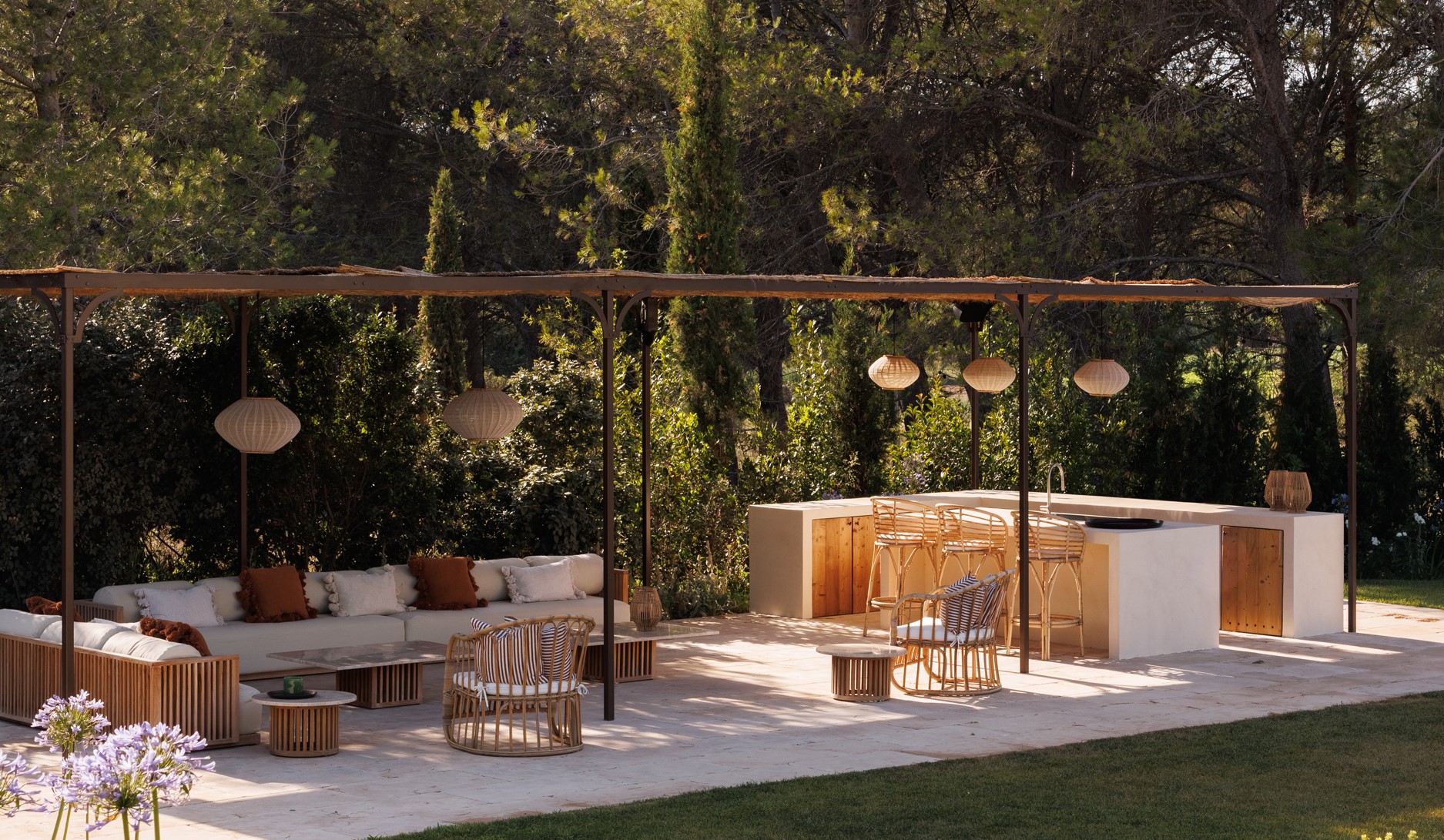
Whether it's a roof, awning, canopy, or more, outdoor kitchen coverings can make mealtime in the backyard more enjoyable, protecting you and your cooking equipment from rain, hail, or strong winds. Depending on the size of your kitchen, or even the seating around it, you can choose from large, solid covers to more flexible, soft designs. Plus, with the right choice of roof, you can even add to the aesthetics of your outdoors.
Looking for fresh, modern ideas? Experts suggest 5 outdoor kitchen coverings to help transform your backyard into your own personal oasis. Take a look.
1. Consider a fabric awning
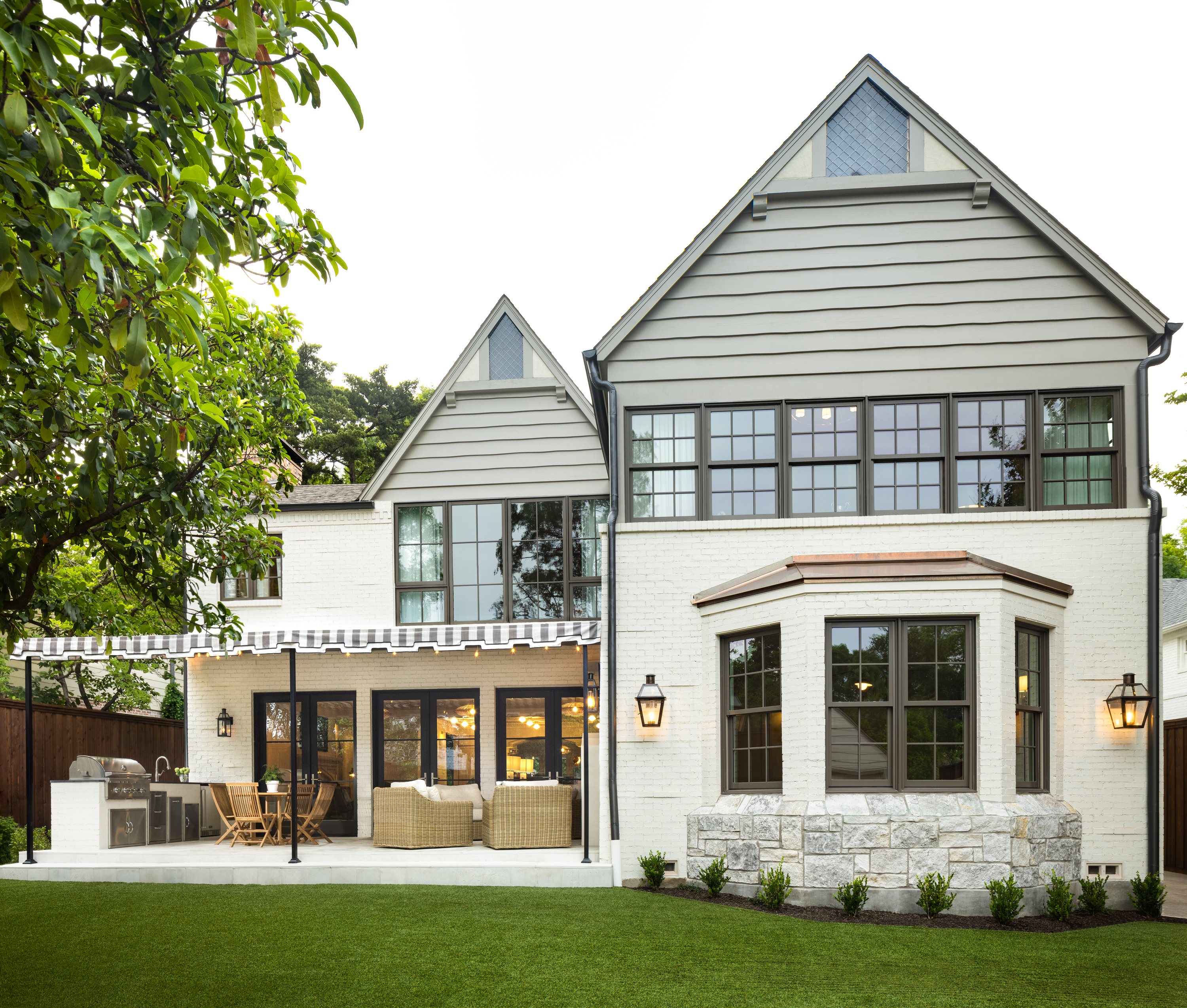
A great way to add a whimsical touch to your backyard kitchen or garden bar is with the help of an awning. These nifty covers are retractable, meaning on sunny days, you can pull these back and happily work up a tan. This is a great solution for someone who wants to enjoy the outdoors all year round.
'We wanted to bring in a touch of SoCal with the black and white striped awning to add a bit of glamour and charm,' says the Dallas-based Eddie Maestri, principal architect and creative director of Maestri Studio. 'The canvas awning also allows natural light to be filtered through the fabric unlike a solid covering, and we were able to achieve more height in the space without doing a greater roof slope that would have been required with a solid cover.'
2. Add a curved trellis
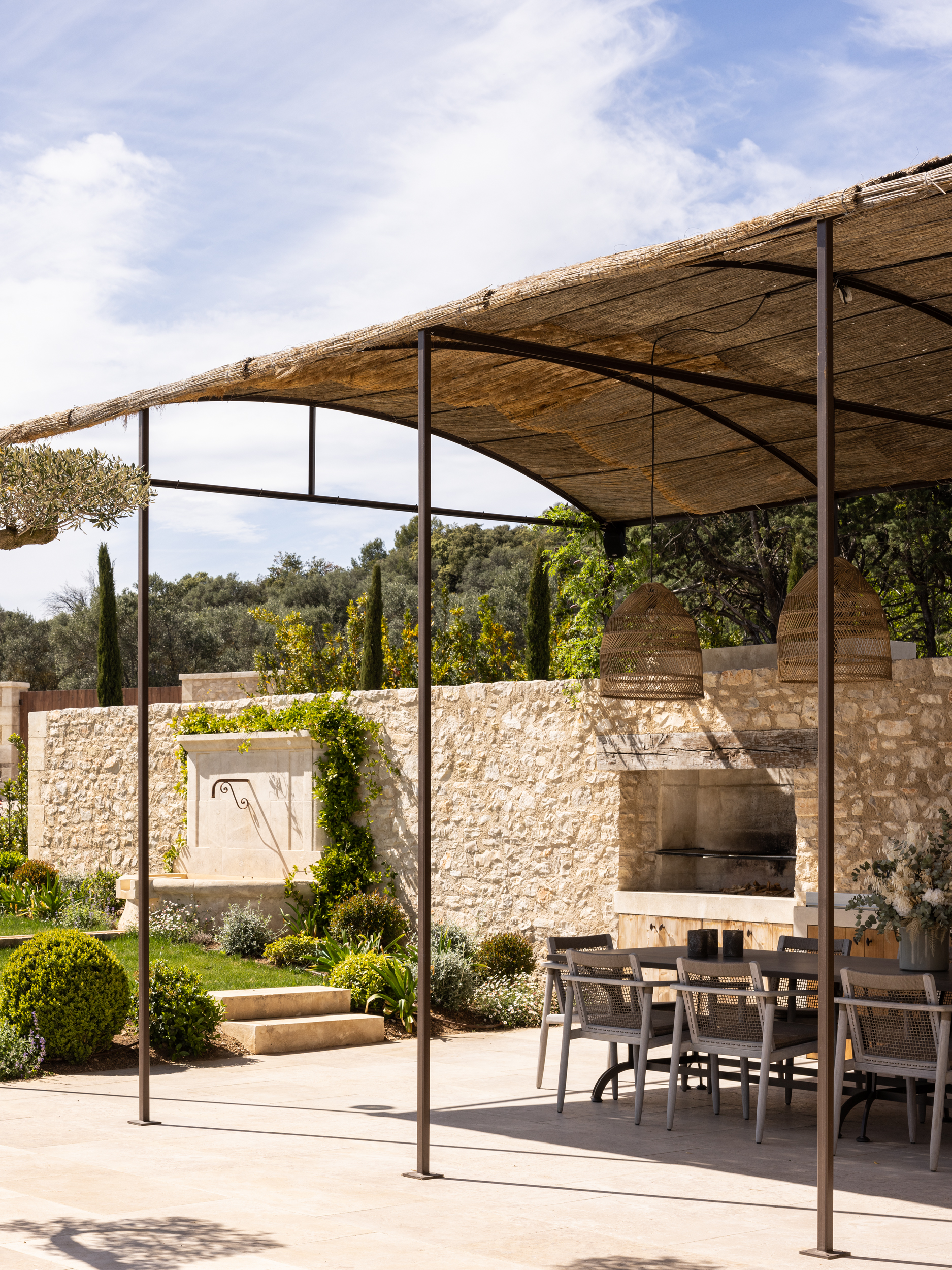
To add an earthy touch to your outdoor dining and kitchen, consider a roof made of natural materials.
A trellis provides an elegant and functional structure to an outdoor kitchen,' says Jean Bosc, co-owner and architect associate at Bosc Architectes. 'The thin metal framework serves as the primary support, offering both durability and a lightweight appearance that blends seamlessly with the natural environment. Atop the trellis, small bamboos known as canisse are strategically placed to form the roof. These bamboo reeds are tightly bound together, creating a natural canopy that filters sunlight while providing substantial shade. The canisse not only enhances the aesthetic appeal of the structure with its rustic charm but also offers practical benefits. They are naturally resistant to weather conditions and provide excellent ventilation, making them ideal for the heat generated by cooking activities beneath.'
'The concept involves an elegant, curved trellis here, like an extension of the house, creating a seamless transition between the indoor and outdoor spaces,' says Jean. 'The metal chosen for this trellis is a powder-coated steel to match the home's exterior, ensuring durability and aesthetic cohesion. Over this curved metal framework, canisse is intricately woven to form a protective canopy. This natural roofing not only shields the area from the sun but also curves around to offer a cozy, intimate setting for outdoor dining or relaxation.'
3. Install beams
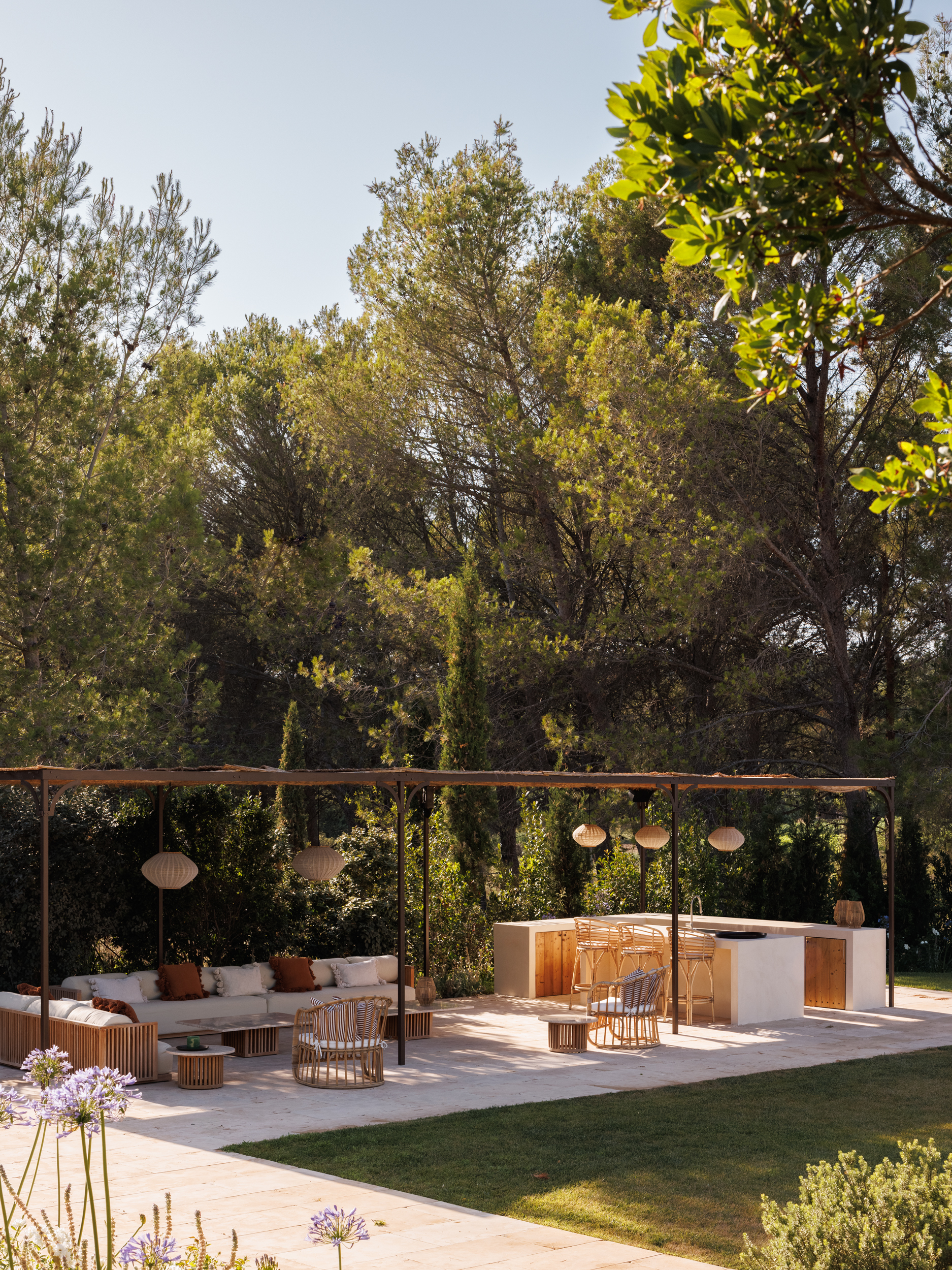
'This independent structure situated in the garden, near the swimming pool, is designed with a flat trellis framework, crafted from sleek, minimalist metal beams, forming a clean, modern silhouette that contrasts with the organic forms of the garden,' says Jean.
'Topped with a flat array of canisse, the roof provides a full shade cover ideal for hosting gatherings or enjoying peaceful solitude amidst nature. The flat design allows for easy maintenance and harmonizes with the horizontal lines of garden landscaping. This structure is not only a functional addition but also acts as a sculptural feature that enhances the visual interest of the garden space, offering a structured yet inviting area for outdoor activities.'
This structure is also useful in protecting outdoor furniture, and even the outdoor bbq while still allowing light and cool breeze to filter in. Consider hanging rattan lamps or string lights along the covering for a dainty touch.
4. Cover wit a solid roof

In extreme climates with torrential rain, snow, or heat, it's advisable to have a more solid roofing that protects the home from the elements.
'For this space, we selected a stain grade wood ceiling to balance out the stone and brick,' says Mary Patton, founder of Mary Patton Design. 'It adds a layer of refined rustic warmth and ties into some of the wood inside the house.'
For a more seamless look, you could also consider mimicking the same material in your outdoor living room furniture wooden chairs, and table, all finished in these weather-resistant materials. And, if you want to soften the seat or add extra support, why not opt for some outdoor cushions too?
5. Go in for partial coverage
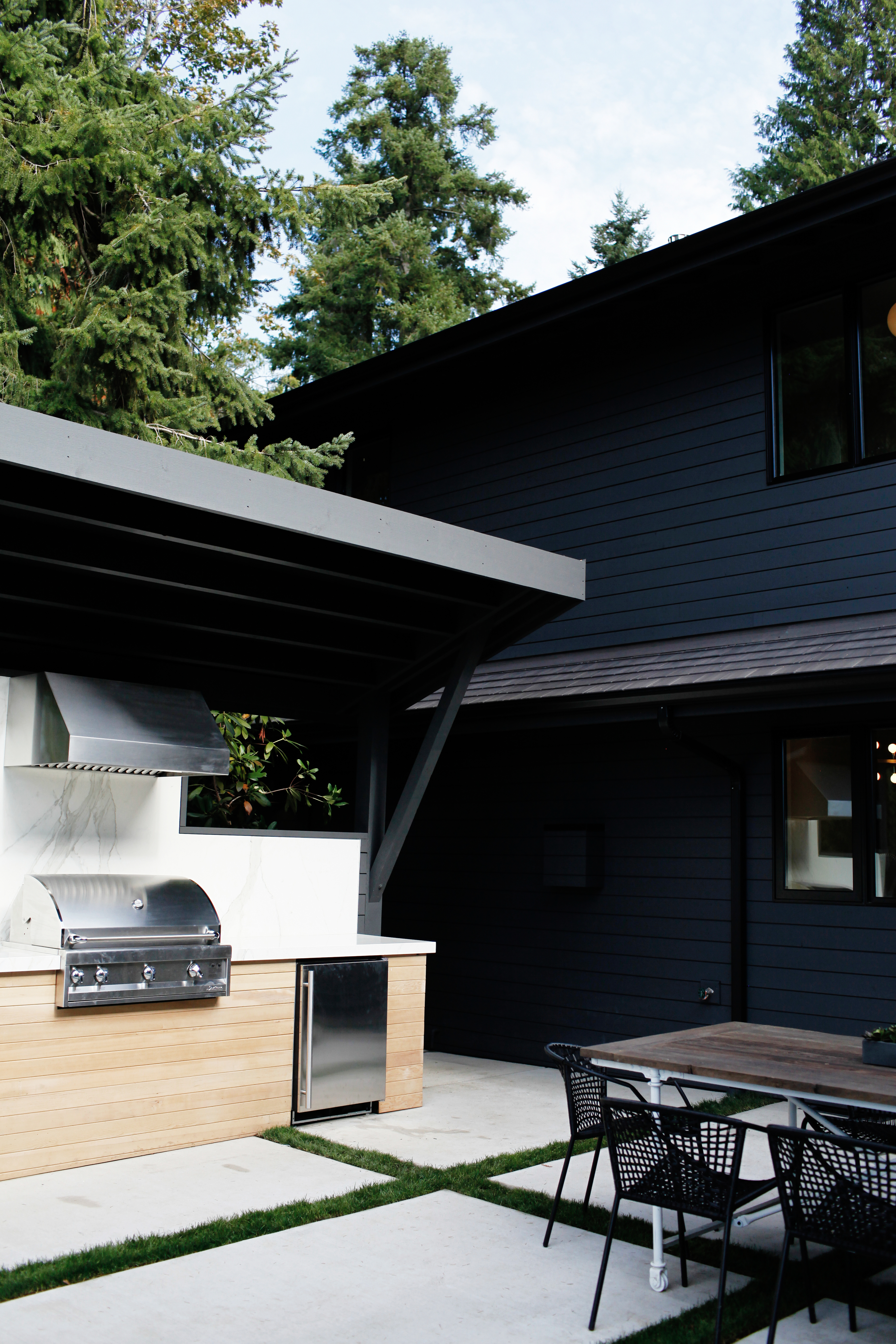
In small backyards, that do not have the space to accommodate large structures, partial coverage can suffice. These can range from something as simple as a screened-in porch with outdoor kitchen appliances placed below it to a roof deck with half-awning. For something in between, consider a transition room with automated screens and a louvered roof that can close and open at a moment's notice.
'We framed the roof to match the roofline and the materials of the house to keep things synergistic,' says Lisa Staton, founder of Lisa Staton Design.







